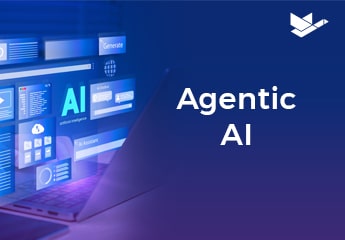Digital insurance — a term that refers to the technologies, applications, and platforms insurers use to sell and manage their products — is largely becoming the status quo in our industry. This is abundantly clear in the personal auto insurance vertical, where customers increasingly expect to interact with a mobile app more than a real person to get their policy, pay their bills, or even file their claims.
While the convenience of auto insurance tech and automation is crucial, carriers are also finding they must strike a balance between speed and service. People still need to feel valued, and the personal touch of a customer service rep can improve satisfaction during a customer’s most critical time of need.
Thankfully, there are many options on the market today that provide the advanced capabilities required for insurance automation, as well as the care and consideration only provided by a personalized, human experience. Here is a guide to personal auto automation that offers the best of both worlds.
What Does Personal Auto Insurance Automation Entail?
Personal auto insurance is a high-volume business, which justifies the need for a low touch, automated solution. Today, personal auto insurance automation primarily works around self-service portals and apps. Nearly all functions that a customer might need to access can be done via the app — quotes, bill pay, policy renewal, card access, and most importantly, claim filing.
Artificial intelligence and big data make claims automation possible and easy. As many already know, customers can submit all necessary information and complete almost the entire claims process on their smartphones. Some major functions of the personal auto insurance cycle that have been automated or improved by AI include:
- Customer interaction: Customers don’t have to wait to speak to a representative — they can report incidents anytime and anyplace via chatbots. This speeds up the claims process, and the chatbot feature can continue to assist during the claims process, increasing turnaround speeds and improving cycle times.
- Damage assessment: Insurers and customers can begin the damage assessment process and handle communication using AI technology. Using a mobile app, customers will be prompted to take and submit specific photos and videos of the damage, which is then processed by AI technology.
- Fraud detection/management: AI and machine learning provide much-needed new capabilities for the early identification of potential fraud, as well as new tools for fraud investigators. With real-time data and other new data processing, AI can detect fraudulent behavior and alert insurers before any money is lost.
- Telematics: Cars can now be equipped with telematic devices that measure and collect speed, location, and accident data. With this data, insurers can determine your policy premium on a usage-based scale. This benefits both insurers and insureds, who can use their safe driving habits to save money while carriers save on claims costs.
Benefits of Automation for Personal Auto Insurance
A 2018 survey conducted by LexisNexis found that insurance carriers are “increasingly using automation to be more efficient, reduce costs and improve their competitive edge through better customer service.” So, aside from the benefits automation will provide to business operations, carriers must turn to automated solutions just to keep up with competitors.
And because competitors are offering near-touchless service via mobile applications, customers expect all insurers to offer automated auto insurance. In an article published in Insurance Thought Leadership, Vice President of Product Management and Claims for LexisNexis Risk Solutions, Bill Brower, said, “customers prefer fewer touches and expect fast cycle times, as they have become accustomed to the speed of digital service in other industries.”
Aside from keeping up with competitors and providing the level of service customers expect, there are a few, operation-specific benefits to personal auto insurance automation.
- Optimize Data to Drive Operational Efficiency
Automated insurance functions mean increased access to valuable data that can inform multiple functions within an organization. With the right SaaS insurance solution, carriers can leverage data to build robust customer profiles, improve personalization, and improve products and overall operational efficiency. - Bring Innovative Products to Market Quickly
With automated functions, low-code capabilities, and greater data analytics, carriers can improve product development and transactional tasks to bring products to market faster. With increased development efficiency, carriers can offer the pricing and coverages that attract customers and the experiences that convert and grow relationships. - Automate the Experience
Automating the claims process benefits insurers in a number of ways. From reducing claims touches and cycle times to boosting employee productivity and customer satisfaction, auto insurance carriers can expect improvement across many of their functions. Away from claims, insurers can easily configure straight-through processing workflows that can support a high volume of drivers and vehicles. - Excel at Customer Service
Unfortunately, customer/insurer interaction largely occurs during times of crisis. And in a customer’s time of need, providing omnichannel experiences and near-instant communication will make them feel protected and valued. This also ensures a level of personalized service that keeps customers coming back year after year.
Challenges Carriers Face with Insurance Automation
Automating the personal auto line of business is not a process without its challenges. And while they can be overcome, it’s wise to initiate the process with a clear understanding of what to look out for. Some common obstacles carriers encounter with auto insurance automation include:
- Moving to a unified data system to get a full view of drivers, households, and related risks, especially if converting from multiple, siloed systems
- Balancing the empathy and care provided by human service agents with the efficiency and speed provided by automated insurance
- Upgrading the technological infrastructure required for automation or optimizing already-in-place automated solutions
- After achieving some level of automation, expanding reach and distribution capabilities to independent agents
Duck Creek Personal Auto Insurance Use Cases
Mutual Benefit Group
To better support their insureds and agents across all their lines of business, Mutual Benefit Group knew they needed to migrate their core systems to the cloud. With Duck Creek OnDemand, MBG found a SaaS solution that could scale with them and provide the ideal user experience they were looking for.
Goals
- Compete more effectively against larger carriers across home, personal auto, and commercial lines
- Improve operational efficiency, system performance, and customer experiences
- Shift more resources to direct support of agents and customers
Challenges
- Migrate Duck Creek Suite on-premises instance to Duck Creek OnDemand
- Shift from waterfall to new test-and-learn methodologies and adopt best practice change management and DevOps processes
- The need to minimize business interruption by always staying current with the latest software features and leverage high scalability and availability of the cloud
Results
- Received over 85 updates to their claims system over a six-month period, which were delivered continuously every two weeks
- IT resources reallocated from “keeping the lights on” activities to executing on higher value initiatives and improving user experience throughout the claims lifecycle from FNOL to investigation to settlement and reporting
- Improved customer satisfaction across the entire claims lifecycle
GEICO
When GEICO wanted to improve on their already excellent customer experience and high levels of customer satisfaction, they turned to Duck Creek. With Duck Creek, GEICO increased their speed to market, consolidated disparate systems, and created a streamlined experience for all users.
Goals
- Maintain a competitive edge and high customer satisfaction ratings
- Get new products, features, and capabilities to market with unprecedented speed
- Retain and improve upon GEICO’s unique front-end user experience while upgrading back-end functionalities
Challenges
- Consolidating products onto a single platform for significant operational efficiency gains
- Desire to deliver exceptional end-to-end experiences for agents, policyholders, and comparison shoppers
- Lofty goal of delivering unrivaled speed to market in both traditional and digital channels
Benefits
- Umbrella line deployed in 50 states in just over 12 months, well under the typical 3+ year timeline
- More policies sold during first month in production with Duck Creek than in the prior 12 months combined on the old system
A headless implementation, with GEICO’s user experience on top of the Duck Creek Platform, allowed GEICO to focus on creating award-winning user experiences and powerful sales channels for personal auto, motorcycle, and umbrella lines rather than server maintenance and systems upgrades





